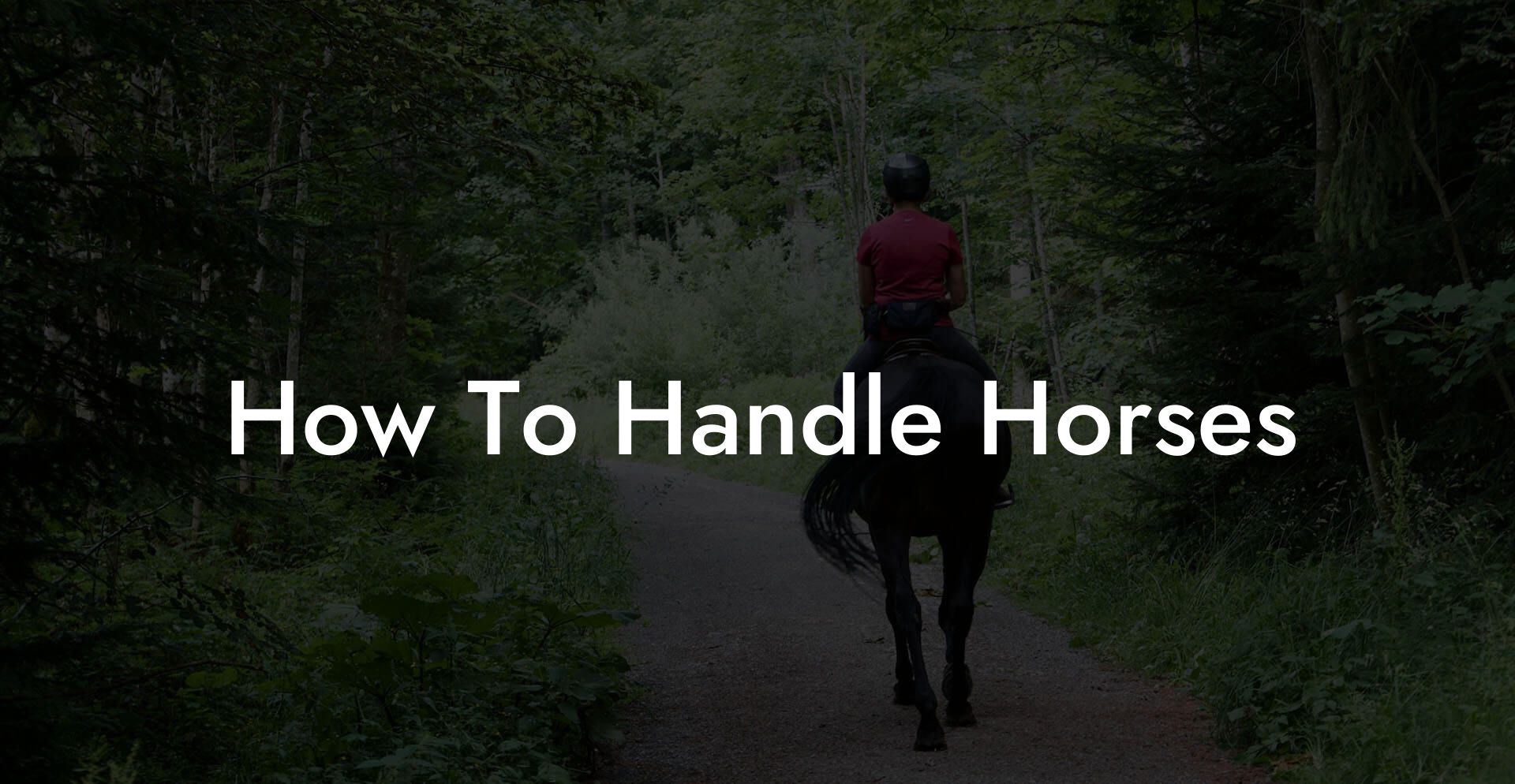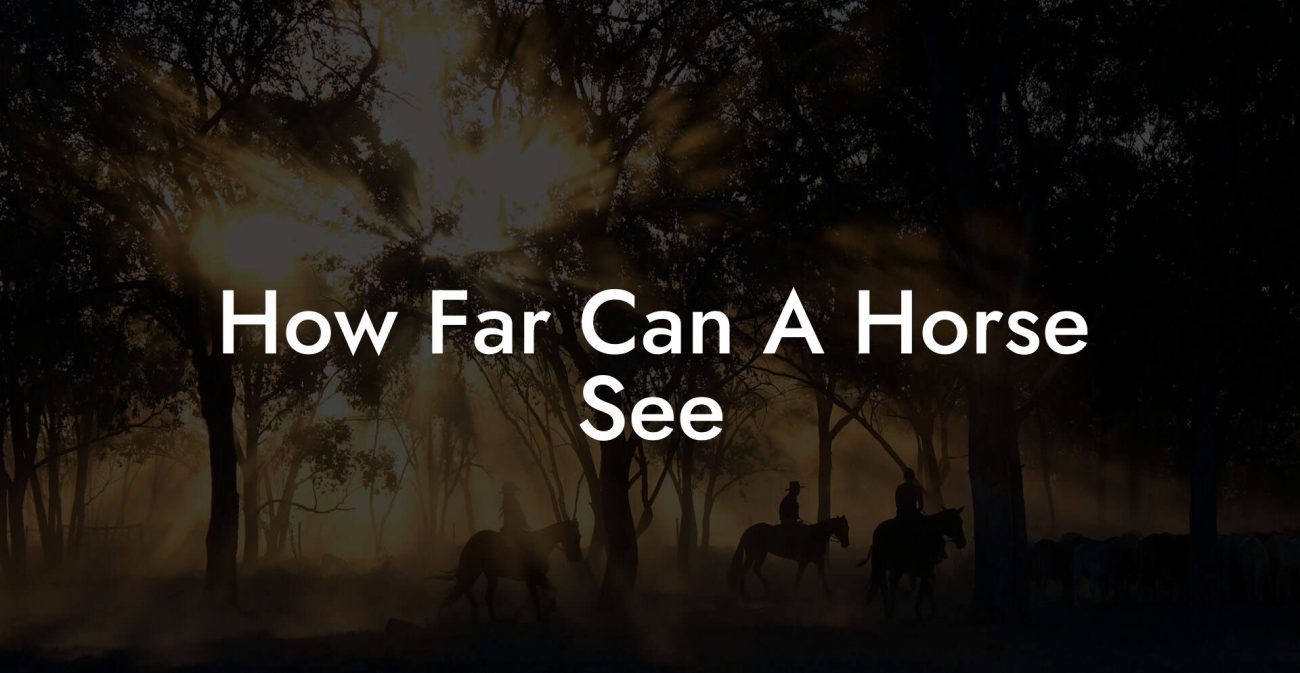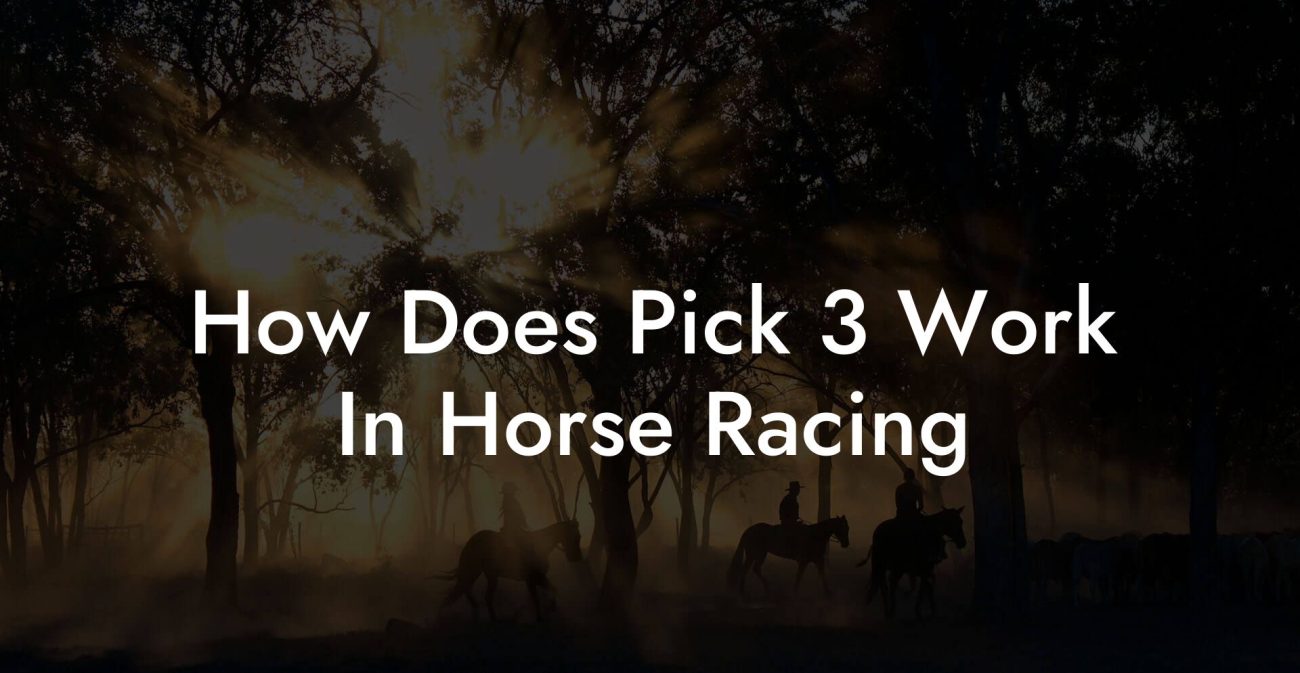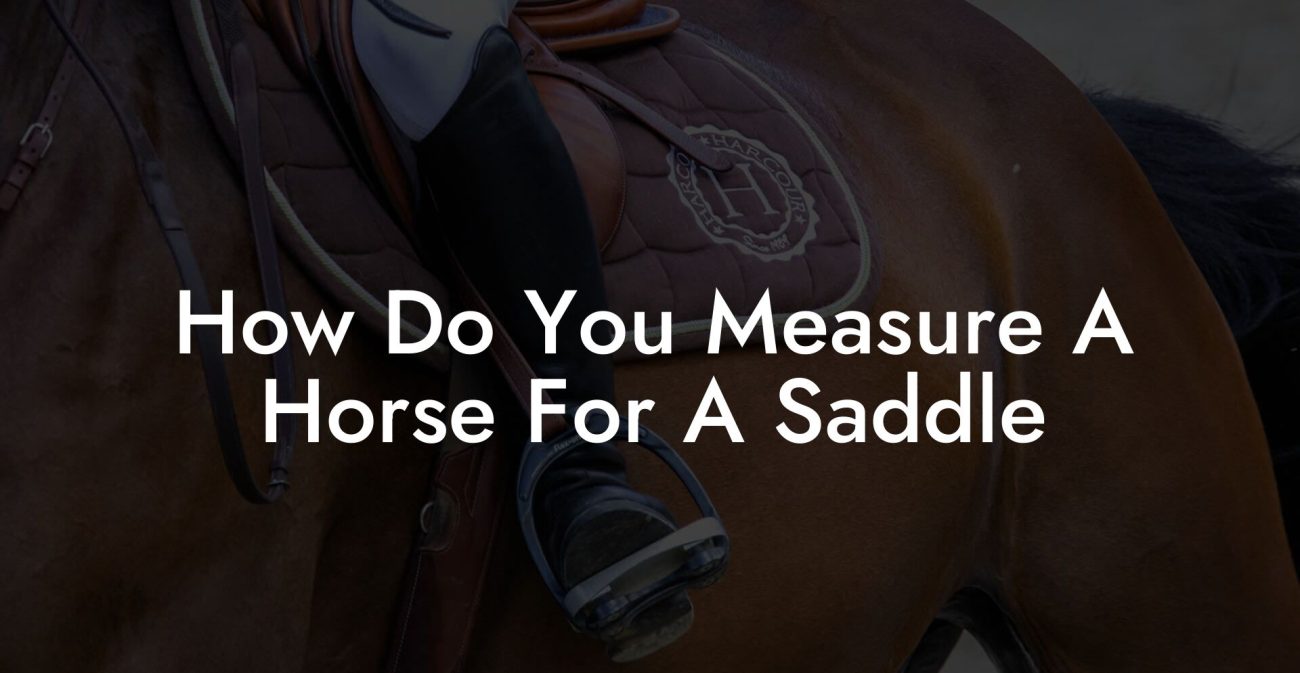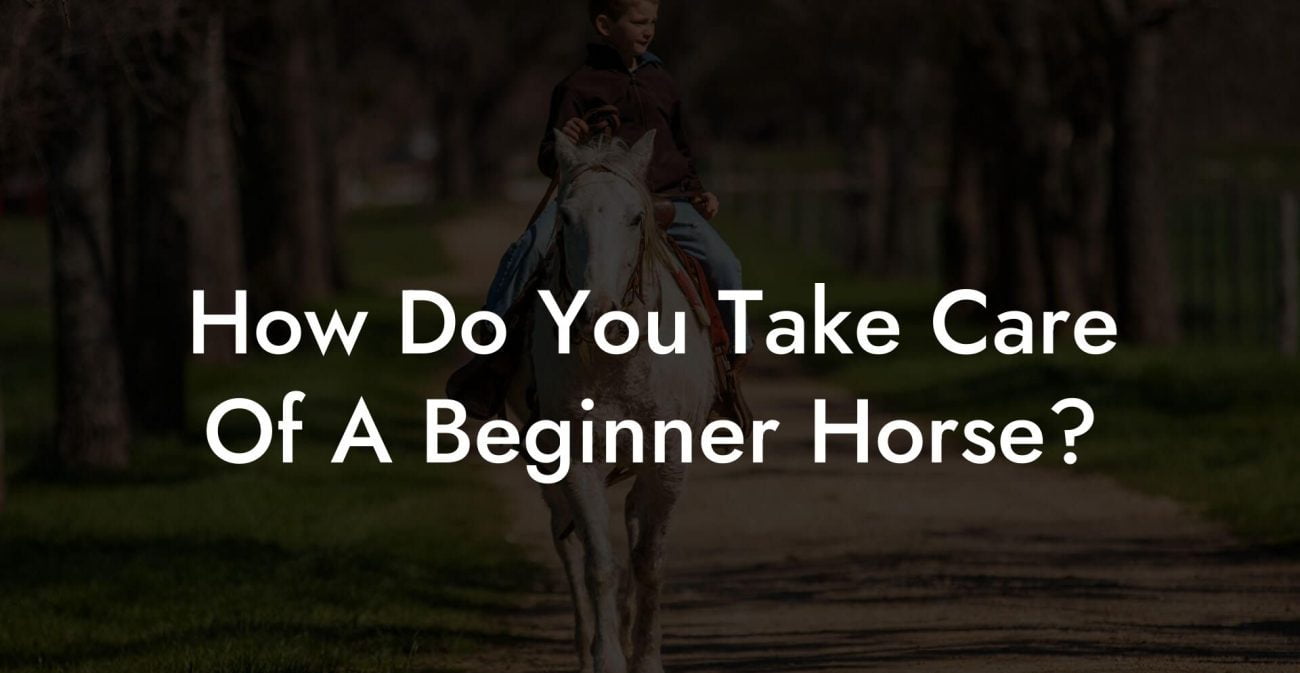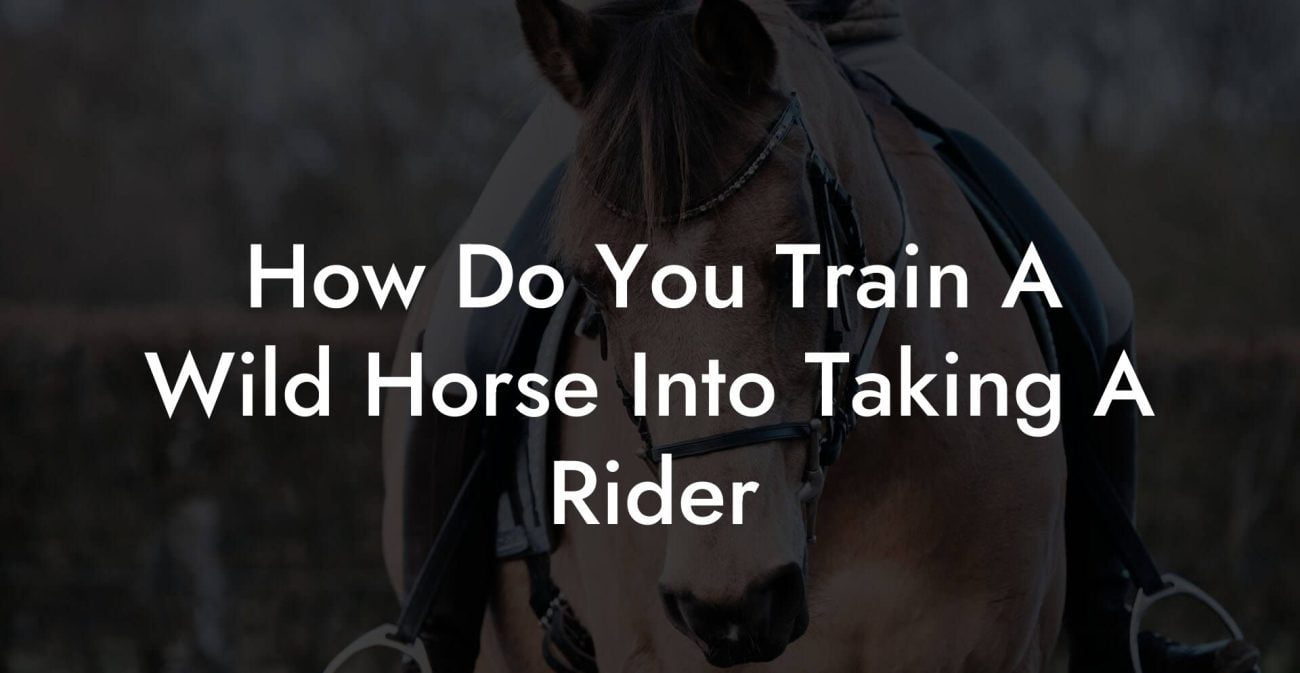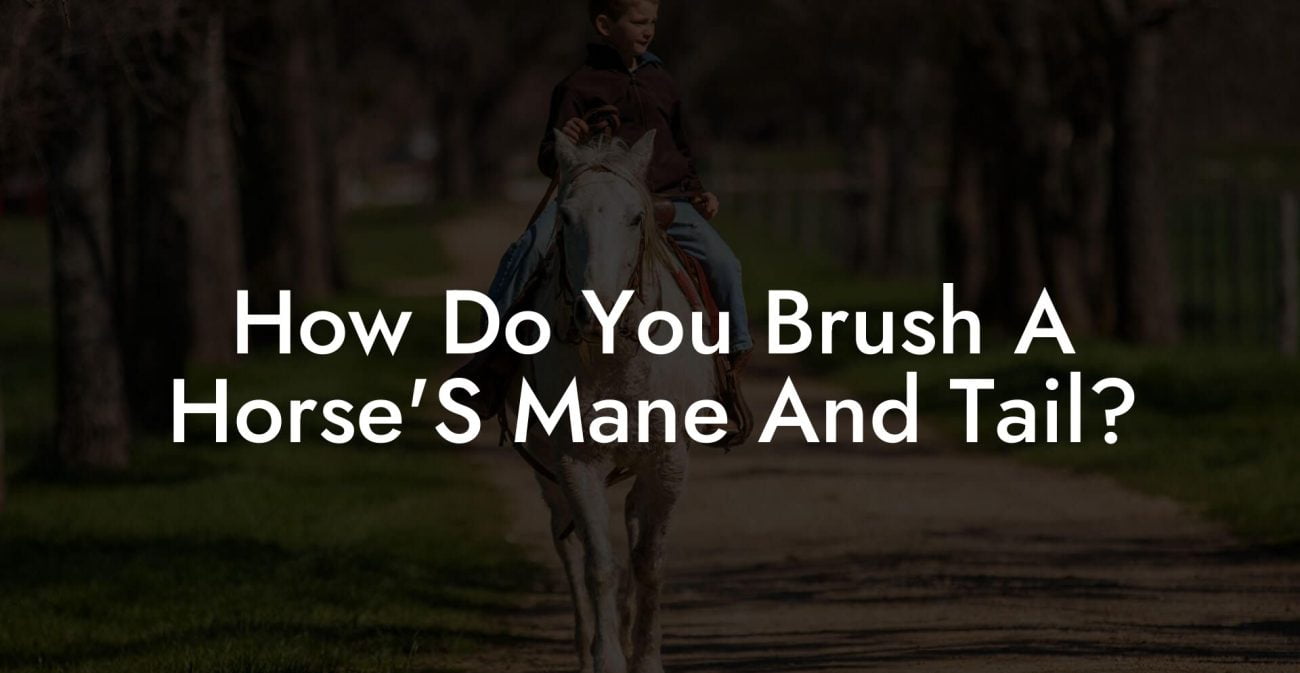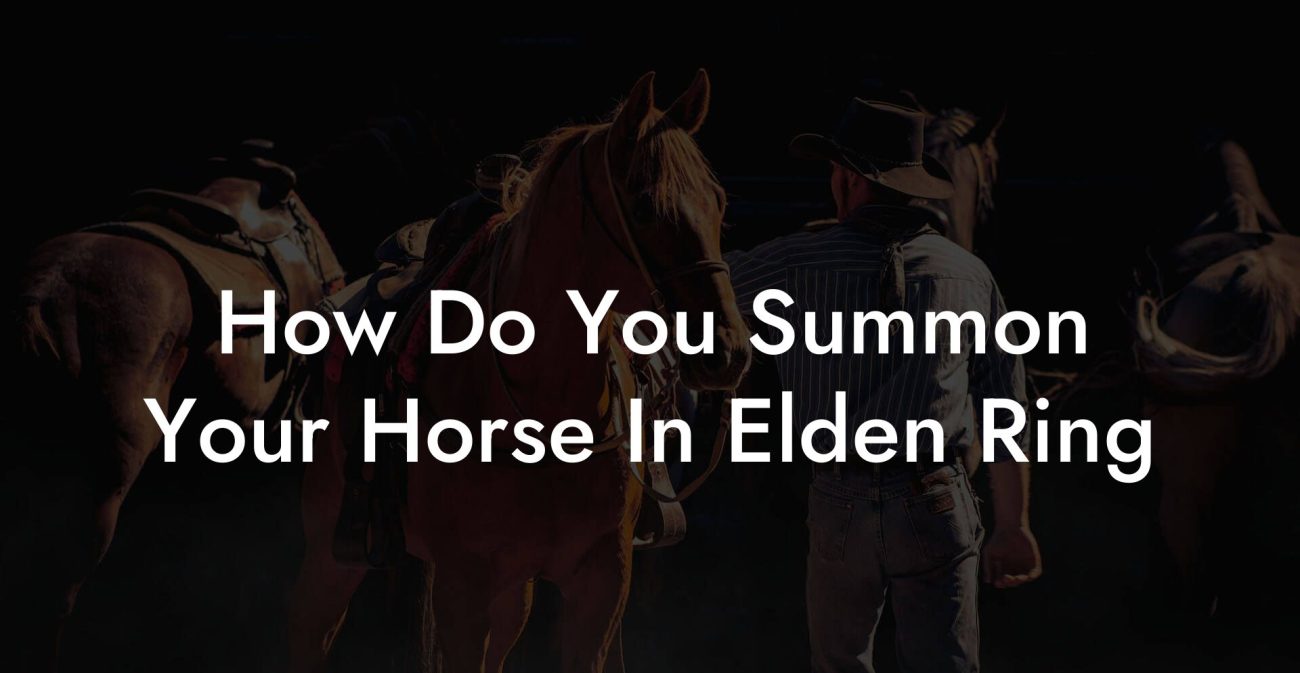Ever wondered how to handle horses without feeling like you’re starring in your own low-budget Western? Whether you’re a first-time horse owner, a weekend pony enthusiast, or someone seeking to hone your equine etiquette for chic Instagram reels, this guide is your backstage pass to mastering the art of horse care. Get ready for a wild ride as we explore the ins and outs of equine handling, from grooming and training to feeding and safety, all served with a generous side of Gen-Z wit and millennial charm.
Quick Links to Useful Sections
- Understanding Your Equine Partner: More Than Just a Ride
- Getting Started: The Basics of Equine Behavior and Communication
- Building Trust: The Heart of Horse Handling
- The Art of Horse Grooming: More Than a Bubble Bath
- Feeding and nutrition: Fueling Your Horse’s Adventure
- Training 101: Establishing a Routine That Works
- Advanced Horse Handling Techniques: Beyond the Basics
- Horse Riding Essentials: Safety, Technique, and Style
- Handling Everyday Challenges: Dealing With Equine Behavior Ups and Downs
- Equipment and Tools: Your Modern Toolkit for Horse Handling
- Resources and Community Support: Your Next Steps
- Handling Special Situations: Emergency Tips and Dealing with the Unexpected
- Integrative Case Studies in Modern Horse Handling
- Case Study 1: From Horned Headaches to Harmony
- Case Study 2: Overcoming Fear With a Bit of Sass
- Case Study 3: High-Tech Meets Old-School in the stable
- Creating a Personalized Horse Handling Plan That Works for You
- Step 1: Assess Your Current Routine
- Step 2: Set Clear, Achievable Goals
- Step 3: Integrate a Variety of Techniques
- Step 4: Maintain Flexibility and Monitor Progress
- Frequently Asked Questions About Handling Horses
- Your Journey to Master Equine Handling
Understanding Your Equine Partner: More Than Just a Ride
Handling horses goes far beyond the simple act of mounting a saddle and trotting through the fields. Horses are intelligent, sensitive creatures with personalities as vast as the open plains. Whether you’re engaging with a veteran stallion or a playful pony, understanding their behavior, body language, and unique needs is key. This isn’t just about caring for an animal, it’s about building a mutual trust and respect that transforms your relationship into an authentic partnership.
In the modern digital age, social media is flooded with horse selfies and viral riding videos, but behind every perfectly choreographed clip is hours of dedicated care, deep understanding, and practical know-how. So, if you’re ready to level up your horse handling skills, let’s dive into the fundamentals that every horse owner, or aspiring equine whisperer, must know.
From decoding the subtle signals of a nervous gelding to knowing when your mare is ready for a grooming session, this comprehensive guide will cover every aspect of handling horses in a way that fits the lifestyle, humor, and pace of today’s horse enthusiasts.
Getting Started: The Basics of Equine Behavior and Communication
Understanding how horses communicate is like cracking an ancient code, one that combines body language, subtle cues, and even the occasional whinny. Horses rely on non-verbal signals far more than words, and as their handler, learning to interpret these cues is your first step to effective communication. Look out for key indicators such as ear position, tail swishing, and even subtle changes in posture. These signs can tell you when your equine friend is relaxed, alert, or in need of a little extra attention.
It’s no secret that horses are herd animals with an innate need for social connection. When you first step into the world of horse handling, remember that you’re not just interacting with an animal, you’re engaging with a member of a complex social structure. Respect and patience are your secret weapons, and once you show a genuine interest in their well-being, you'll soon find that your horse becomes not only a companion but also a trusted confidant.
Keywords like "equine behavior," "horse communication," and "understanding horses" naturally fit into every conversation you have with your four-legged partner. With a bit of time and practice, you'll be able to decipher those subtle signals and transform initial apprehension into genuine mutual respect.
Building Trust: The Heart of Horse Handling
Trust is the cornerstone of any relationship, and it’s no different when it comes to horses. Building trust takes time, consistency, and a willingness to meet your horse at their level. Start with simple daily interactions like grooming, feeding, or just spending quality time by their side. These small moments help establish a connection that goes far beyond basic care.
One effective strategy is to let your horse approach you on their own terms. Stand quietly, extend a gentle hand, and allow their curiosity to guide your first interactions. Over time, as your horse begins to understand that you’re a calm and predictable presence in their world, you’ll create a safe space where learning and communication can thrive.
Incorporate positive reinforcement techniques by rewarding your horse with treats or kind words for cooperative behavior. Trust is built step by step, and it can make even the most daunting tasks, like tacking or training sessions, feel much more manageable.
Remember, keywords like "trust-building with horses," "equine handling trust," and "partnering with horses" aren’t just SEO strategies, they capture the essence of the relationship you're about to cultivate with your magnificent equine friend.
The Art of Horse Grooming: More Than a Bubble Bath
Let’s talk grooming, a critical aspect of horse care that goes well beyond giving your horse a spa day. Grooming is one of the most accessible ways to build a strong bond with your horse. It’s a time when you can both relax, connect, and ensure their coat, mane, and hooves are healthy and shining.
The process starts with the right set of tools. Invest in high-quality brushes, combs, hoof picks, and mane detanglers. Whether you’re a seasoned pro or a beginner, these tools are essential in keeping your horse’s coat free of debris and tangles, while also helping to stimulate blood circulation. A simple grooming session can set the tone for a day of positive interaction and mutual respect.
During grooming, be mindful of your horse's body language. If you notice any signs of discomfort or irritation, a sudden flinch, or a refusal to stand still, it might be time to adjust your technique or consult with a professional for advice. Maintaining a calm environment is key. Play soft music, speak in a gentle tone, and take your time. Your horse will appreciate the care, and you'll soon notice that regular grooming sessions have a profoundly calming effect on both of you.
By naturally integrating terms like "horse grooming tips," "equine maintenance," and "proper horse cleaning techniques," you align with what modern seekers of equine knowledge are searching for. Remember, a well-groomed horse isn’t just visually attractive, it’s a sign of good health and a strong bond.
Feeding and nutrition: Fueling Your Horse’s Adventure
Just like any high-performance machine, horses need the right fuel to run on. Feeding your horse a balanced diet is a critical part of effective equine handling. Whether you’re grazing on lush pasture or supplementing with high-quality feed, understanding your horse’s nutritional needs is paramount.
Start with the basics: forage should make up a significant portion of your horse's diet. High-quality hay is a must, as it mimics their natural grazing habits. Incorporate grains, minerals, and vitamins as necessary, keeping in mind that moderation is key. Too much of any one type of feed can lead to digestive upset, which no one, especially not your horse, wants.
Stay updated with natural keywords like "horse nutrition," "equine diet," and "feeding horses," which help modern horse lovers find actionable tips on maintaining a diet that balances energy needs and digestive health. Many horse owners also lean into holistic and integrative approaches, incorporating natural supplements like flaxseed, beet pulp, or omega-3 fatty acids to support overall vitality.
Don’t forget the hydration factor! Fresh, clean water should always be available. And if you’re exploring different feeding techniques, keeping a log of your horse’s dietary intake and responses might help you tailor future meals for optimal health.
Training 101: Establishing a Routine That Works
Training a horse can feel as daunting as nailing the perfect TikTok dance routine, but with a little patience and plenty of practice, it’s totally achievable. The first step involves setting clear, consistent boundaries while ensuring that the training sessions remain fun and engaging for your horse.
Begin with the basics: ground training. This involves everything from leading exercises to desensitization activities that help your horse become accustomed to different stimuli. Use treats and rewards to reinforce positive behaviors. For instance, when your horse responds promptly to a gentle command, reward them with praise or a tasty snack. This not only boosts their confidence but also reinforces the connection between your words and the actions you desire.
Incorporate keywords like "horse training techniques," "basic equine commands," and "horse handling training" as you offer step-by-step instructions on everything from leading a horse to properly introducing them to tack and equipment. Remember, consistency is everything. Over time, even challenging behaviors can be reshaped through repetition and kind reinforcement.
As your horse becomes more comfortable with the basics, gradually introduce more advanced tasks such as transitions from walk to trot, or even light jumping exercises if you’re a bit more experienced. The goal here isn’t to rush the process but to build a robust foundation that enhances your horse’s overall responsiveness and your partnership.
Advanced Horse Handling Techniques: Beyond the Basics
Once you’ve mastered the essentials, it’s time to dabble in some advanced horse handling techniques. This section is designed for those who want to take their skills to the next level, whether it’s for competitive riding, specialized training, or simply impressing your friends at the barn.
One of the most rewarding aspects is learning how to read a horse’s mood and adapt your approach accordingly. Advanced techniques involve a deeper understanding of equilibrium and balance, both for you and your horse. Keep in mind that every horse is unique. A technique that works perfectly for one might need tweaking for another.
Consider exploring methods like liberty training, where horses learn to respond to subtle body cues without the need for physical restraint. This approach champions a more natural interaction and often results in a more harmonious relationship. Skilled trainers often employ this method to raise horses that are not only responsive but also exhibit remarkable confidence and calm under pressure.
Use semantic keywords such as "advanced horse handling," "equine training methods," and "liberty training for horses" as you explore more nuanced strategies that honor both tradition and innovation. Advanced methods might include using body language as a cue system or integrating clicker training techniques, a method borrowed from the world of canine training that’s quickly finding its place in equine education.
Whether your goal is to prepare for competitive events or simply enjoy a more enriching experience with your horse, these advanced techniques can transform your interactions and bring a whole new level of effectiveness to your handling skills.
Horse Riding Essentials: Safety, Technique, and Style
Riding a horse isn’t just about crunching through fields or striking Instagram-ready poses; it’s a complex activity that demands preparation, proper equipment, and a solid grasp of safety protocols. Before you saddle up, literally, make sure you’re equipped with the right gear and knowledge.
First and foremost, invest in quality riding apparel. A well-fitted helmet isn’t just a fashion accessory, it’s a crucial piece of safety equipment that protects you during unexpected situations. Riding boots, breeches, and gloves ensure that you have both the support and grip needed when handling a live, moving animal.
Next, learn the basic riding techniques. Start with mastering the proper posture: straight back, relaxed shoulders, and soft yet secure reins. Every good rider knows that balance is as essential as the horse’s trust in you. Practice makes perfect, and as you gain confidence, explore various riding disciplines such as trail riding, dressage, or even a bit of jumping.
Incorporate phrases like "horse riding tips," "safe riding techniques," and "beginner’s horse riding essentials" to connect with enthusiasts searching for sound advice. Safety is always paramount: perform regular checks on your equipment, be aware of your surroundings, and never underestimate the power of clear communication while riding.
As the saying goes, “Ride with your head, not just your heart.” Embrace continuous learning, take lessons from experts when needed, and always prioritize both your safety and the horse’s comfort. It’s all about creating a balanced, enjoyable, and empowering riding experience.
Handling Everyday Challenges: Dealing With Equine Behavior Ups and Downs
Even the most docile horses have their moments of stubbornness or anxiety, and as a handler, you’re bound to encounter some challenging days. From a horse that suddenly spooks at its own shadow to one that’s decided today is the day to be extra willful at feeding time, every day can be unpredictable.
When dealing with challenging behavior, pause and assess the situation. Often, a horse’s resistance is their way of communicating discomfort, uncertainty, or even pain. It’s always better to be proactive, take a break, re-establish your connection, and review your approach. Sometimes, a simple change in routine or method can make all the difference.
Keywords like "managing horse behavior," "dealing with equine challenges," and "handling horse anxiety" serve as crucial guideposts to finding solutions that work. Consider seeking advice from experienced trainers or joining online equine communities where fellow horse lovers share their tips, tricks, and stories of overcoming similar hurdles.
Humour can be your ally here too. Sometimes, when your horse decides it’s playing hard-to-get, a light-hearted moment can ease the tension. Laugh at the absurdity, make adjustments, and move forward with a fresh perspective. After all, every challenge is an opportunity to refine your skills and deepen your bond with your horse.
Equipment and Tools: Your Modern Toolkit for Horse Handling
In today’s tech-savvy world, handling horses isn’t limited to just physical tools. A well-stocked equine toolkit includes everything from the traditional grooming kit to modern gadgets that keep track of your horse’s health. Balancing high-tech and time-tested methods can supercharge your equine experience.
Traditional tools such as brushes, curry combs, hoof picks, and saddles remain essential for daily maintenance and grooming. On the digital front, consider apps that help monitor your horse’s diet, behavior, and even fitness. Some progressive equine owners even use GPS trackers and wearable devices to keep tabs on their horse’s activity levels during long rides.
Integrate semantic keywords like "horse handling equipment," "modern tools for equine care," and "high-tech equine management" to capture the essence of this evolving aspect of horse care. Whether you’re a tech-savvy millennial or a Gen-Z trailblazer, blending tradition with innovation can give you the edge in managing your horse’s health and performance.
Stay informed about the latest in equine gadgets through reputable blogs, online forums, and equine expos. Your investment in the right equipment not only contributes to your horse’s well-being but also enhances your confidence and competence as a handler.
Resources and Community Support: Your Next Steps
The journey of handling horses is one that you don’t have to take alone. In today’s interconnected world, online and offline communities provide endless support, insights, and camaraderie. Start by joining local riding clubs, exploring online forums dedicated to equine care, and following influential horse enthusiasts on Instagram or YouTube.
Seek out workshops, seminars, and webinars hosted by expert trainers and veterinarians, and consider subscribing to equine magazines or blogs for the latest trends and strategies. These resources not only expand your knowledge but also offer invaluable networking opportunities with fellow horse lovers.
Engage with hashtags like #EquineCare, #HorseHandling, and #ModernRider to connect with a vibrant community that’s as innovative and spirited as you are. By tapping into these communities, you not only learn but also get to share your journey, victories, and even the humorous missteps along the way.
Every step forward is an opportunity to grow and share the joy of horses with others. Whether you’re looking for practical tips or just need a little moral support during a rough day at the barn, remember that the equine community is always there to cheer you on.
Handling Special Situations: Emergency Tips and Dealing with the Unexpected
No matter how well-prepared you are, handling horses sometimes brings unexpected challenges. From minor injuries and colic episodes to full-blown behavioral meltdowns, being ready for the unexpected is essential. Preparation and preventative care can save you a lot of heartache and keep your steadfast companion in top condition.
Create an emergency kit for your horse that includes first-aid supplies, a basic toolkit for minor repairs to tack, and contact information for your veterinarian. Familiarize yourself with common equine emergencies and keep a calm head if something goes wrong. Having a plan in place boosts your confidence and assures that your horse gets the best care possible.
Use keywords such as "equine emergency tips," "handling horse emergencies," and "veterinary care for horses" to guide readers toward informative resources that detail essential steps in handling crises. In moments of uncertainty, reaching out to experienced professionals and online forums can provide clarity and reassurance.
Remember, while emergencies can be stressful, they also provide an opportunity to build a deeper understanding of your horse’s needs and further strengthen your bond. Preparedness is a hallmark of a true horse handler.
Integrative Case Studies in Modern Horse Handling
The best way to understand effective horse handling is by looking at real-life examples. Meet a few passionate horse enthusiasts who transformed their approach, turning everyday challenges into lessons in trust, friendship, and resilience.
Case Study 1: From Horned Headaches to Harmony
Jessica, a young urban professional, found herself overwhelmed by the responsibilities of a first-time horse owner. After grappling with a temperamental mare and confusing behavior cues, she enrolled in a locally run equine training workshop. With the help of modern techniques, social media support, and guidance on horse grooming and nutrition, Jessica gradually transformed her relationship with her horse. Today, she credits regular grooming sessions, advanced clicker training methods, and online support groups for the harmony they now share.
Case Study 2: Overcoming Fear With a Bit of Sass
Mark, who always dreaded horse riding due to a bad childhood experience, decided to face his fears head-on. By starting with simple ground training and daily grooming rituals, he slowly built the confidence necessary to ride. Leveraging digital tools to track his progress and connecting with a supportive online community of fellow riders, Mark now enjoys stress-free rides and a newfound respect for how understanding and patient training can change everything.
Case Study 3: High-Tech Meets Old-School in the stable
Samantha, an early adopter of wearable tech, integrated smart devices into her horse handling routine. Monitoring her horse’s health and behavior using a specialized app, she teamed up with traditional grooming techniques and daily mindfulness practices. The result? A well-rounded care routine that impressed even the most seasoned trainers in her community, proving that a blend of modern tools with timeless care methods is a winning formula.
Each of these case studies illustrates that whether you’re a rookie or a seasoned handler, the right combination of trust, training, technology, and community can lead to remarkable improvements in how you handle and care for your horse.
Creating a Personalized Horse Handling Plan That Works for You
Just like that filter you choose for your Instagram story, a personalized horse handling plan is tailor-made to suit your unique style, needs, and goals. Creating a comprehensive plan means taking into account everything from daily routines to long-term training and nutritional strategies.
Step 1: Assess Your Current Routine
Begin by objectively evaluating your current engagement with your horse. Are you consistent with grooming sessions? Is your feeding schedule up to date? Do you recognize your horse’s favorite comfort signals? Documenting your current routine can help highlight areas of improvement.
Step 2: Set Clear, Achievable Goals
Whether your goal is to improve your riding technique, strengthen your horse’s diet, or enhance mutual trust, setting SMART (Specific, Measurable, Attainable, Relevant, Time-bound) goals is essential. Remember, even small steps, like introducing a new grooming technique, can generate big positive changes.
Step 3: Integrate a Variety of Techniques
Combine basic routines with advanced handling strategies. Incorporate regular grooming, training sessions, nutritional planning, and even mindfulness practices. Try new approaches like liberty training for advanced communication, and don’t shy away from integrating modern technology to track progress.
Step 4: Maintain Flexibility and Monitor Progress
Treat your plan as a living document. Regularly assess the outcomes, adjust your strategies, and don’t be afraid to experiment with different techniques. A well-balanced plan is dynamic, evolving as both you and your horse grow together.
Embody keywords such as "personalized horse care plan," "customized equine management," and "tailored horse handling techniques" throughout your planning phase. This strategy not only supports your SEO goals but also guides you in constructing a practical, effective routine.
Frequently Asked Questions About Handling Horses
Below are some of the most frequently asked questions about handling horses, designed to address any lingering curiosities and help you refine your approach.
1. What are the most important aspects of building trust with a horse?
Building trust starts with patience, consistency, and understanding your horse’s body language. Whether you are grooming, feeding, or simply spending quiet time together, every interaction is an opportunity to build a stronger bond.
2. How can I tell if my horse is stressed or uncomfortable?
Look for subtle cues such as pinned ears, rapid tail movement, or frequent foot shifting. Learning these signals can help you adjust your handling techniques and ensure your horse feels safe.
3. Are there any modern tools recommended for horse care?
Yes, modern solutions like equine fitness trackers, diet-monitoring apps, and even virtual training communities are making it easier to monitor and enhance your horse’s health and performance.
4. How often should I groom and feed my horse?
Grooming routines can vary depending on the horse, but daily or every-other-day sessions are ideal for building trust and maintaining a healthy coat. Feeding schedules should be consistent, with a diet largely based on quality hay or pasture, supplemented by appropriate grains and minerals.
5. Can I learn advanced riding techniques on my own?
While self-learning is possible with plenty of online resources and modern digital tools, it’s always beneficial to take lessons from experienced professionals to ensure proper technique and safety.
6. What role does nutrition play in equine health?
Nutrition is crucial; a balanced diet supports muscle health, digestion, and overall vitality. Incorporating nutrient-rich foods along with regular access to fresh water ensures your horse stays in peak condition.
7. How can I deal with a horse that exhibits stubborn behavior?
Patience, consistency, and positive reinforcement are key. Establishing a calm environment, breaking down tasks into manageable steps, and seeking advice from experienced trainers can help overcome stubbornness.
8. What should I include in an equine emergency kit?
An emergency kit should include basic first-aid supplies, tools for minor repairs to your tack, and contact details for your veterinarian. Being prepared can make a significant difference during urgent situations.
Your Journey to Master Equine Handling
Handling horses is a journey that blends physical skill, emotional intelligence, and continuous learning. As you embrace the challenges and joys of equine care, remember that each moment spent with your horse is a step toward building a deeper, more resilient partnership.
Whether you’re refining your grooming techniques, revamping your dietary approach, or exploring new riding strategies, every lesson learned is a victory for you and your majestic companion. This guide has equipped you with the essential tools, insights, and resources to navigate the multifaceted world of horse handling with humor, dedication, and a modern twist.
Step out with confidence, knowing that every brush stroke, training session, and ride is contributing to a narrative of trust, growth, and unforgettable experiences. Embrace the ride, enjoy the journey, and remember that every gallop, trot, and canter brings you closer to mastering the art of equine handling.
So, saddle up, dive into the vibrant world of modern horse care, and let your journey to mastery begin, because behind every great horse is a handler who isn’t afraid to learn, laugh, and lead with heart.

